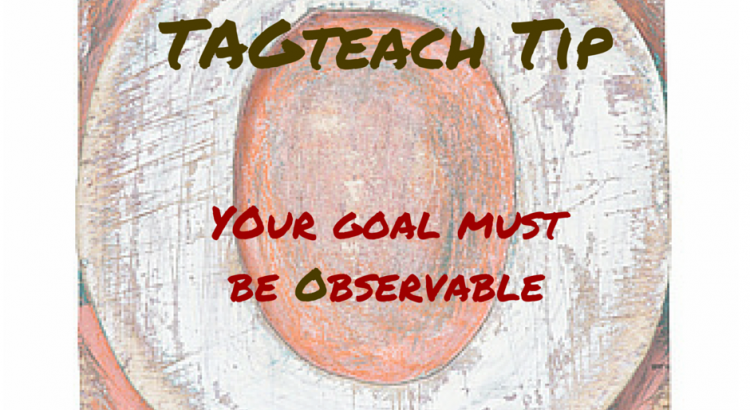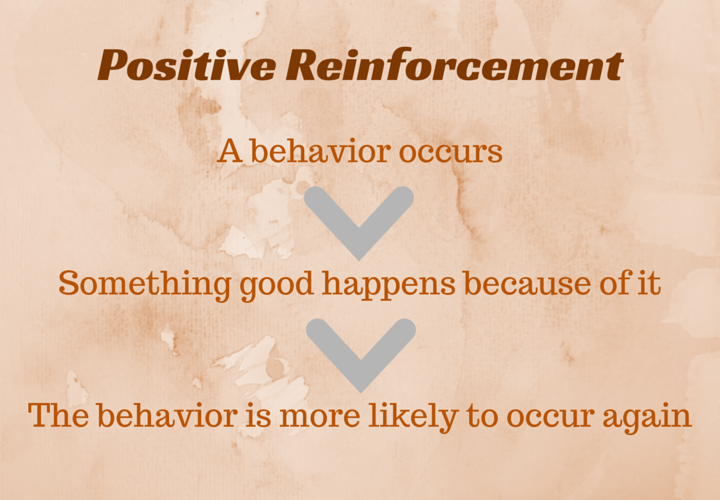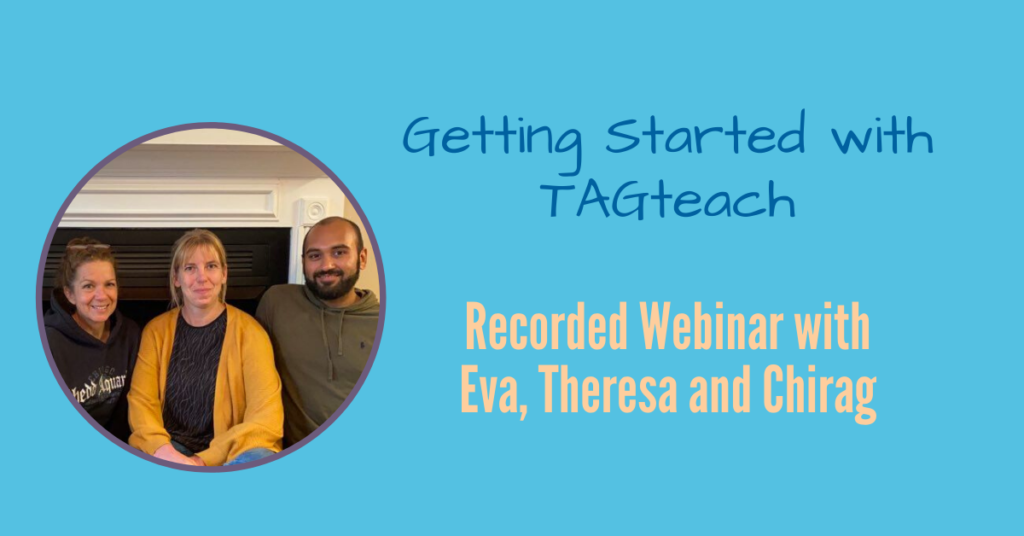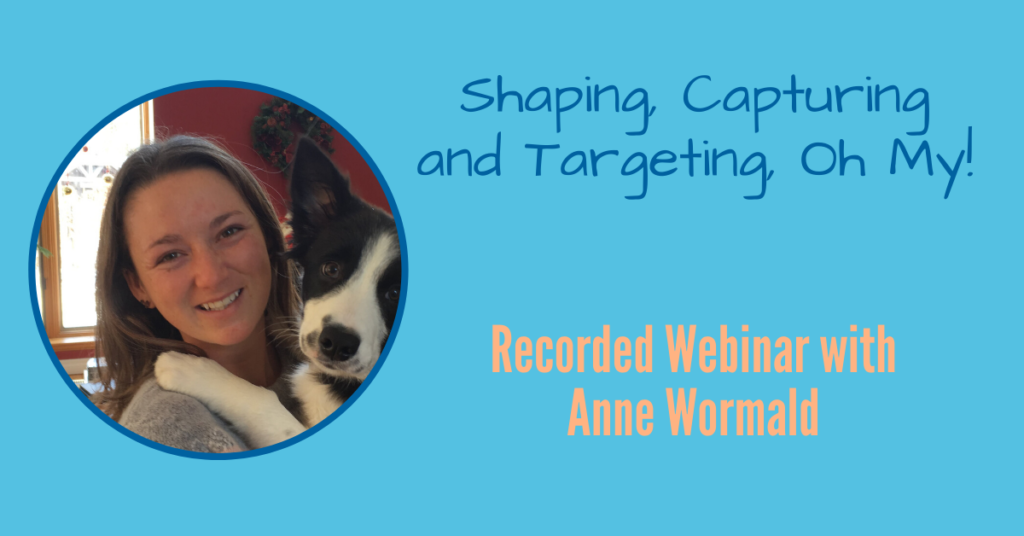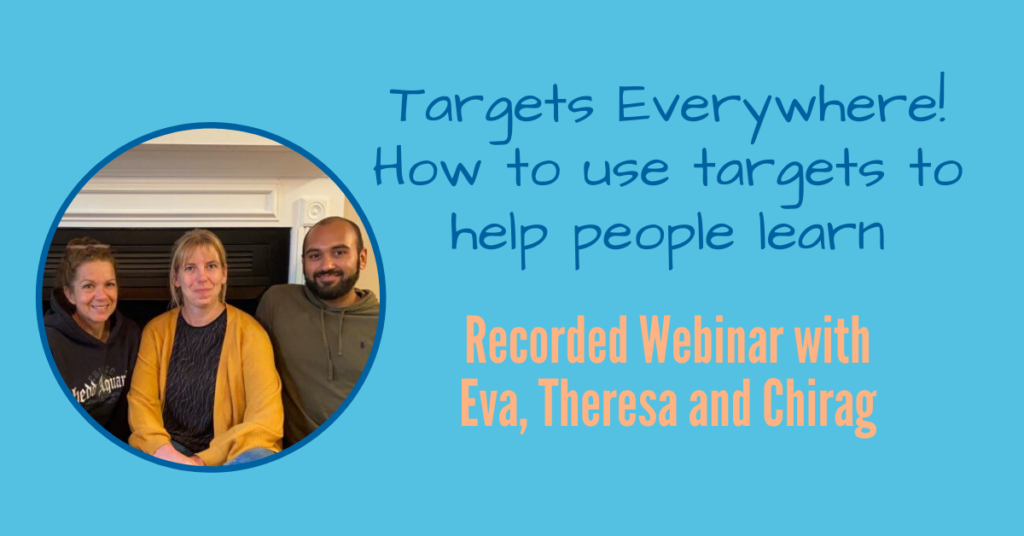When you are setting goals for yourself, or for teaching others, it is important that you can tell exactly when the goal is attained. This seems obvious, but in fact it takes a certain amount of thought to make this happen.
In order for a goal behavior to be attained and then repeated, the behavior must be reinforced. That is, a pleasant consequence must occur immediately after the behavior happens, and this consequence must increase the chance of the behavior happening again. In other words, the most effective way to teach something requires the following sequence:
Behavior happens >> something good happens >> behavior is more likely to happen again
As a teacher (even if teaching yourself) you strive to explain the teaching goal clearly, notice when the learner gets it right and give reinforcement to the learner so that they know that they got it right.
As an example, say you wanted to teach a dancer to kick her leg higher. You could say to her: “kick your leg higher”. But, how much higher? What do you mean exactly? How will you know if she has achieved the goal? How will she know how high? “Kick higher” is a vague goal that is ill-defined and neither teacher nor learner knows exactly what it means. The chances of getting a consistent performance and being able to give clear, timely reinforcement for a vague goal such as this are slim, and progress will be inconsistent at best.
How can you clarify the goal “kick higher” to make it observable and thus reinforceable and repeatable? The way to do this is to attach some very clear criteria to the goal so that both teacher and learner can agree and understand exactly what it means to achieve this goal. One possible strategy with this example would be to hold your hand at the goal height and define the goal as “Kick to hand”. Or you could put a line on the wall or the mirror and define the goal as “kick to line”. This gives you and the learner a clear definition of what it means to succeed and makes the goal clearly observable for you as the teacher.
Maybe you want to set a goal for yourself to get more exercise. “Get more exercise” is another ill-defined goal. What does this mean? How can you observe this and know if you achieved this goal? In order to be successful and to be able to say to yourself “Yes, I did this”, you need to define the goal in terms of something specific that you can easily track. Let’s say that part of your exercise goal is to use your elliptical trainer more often. A specific and observable goal related to this could be to go 5 seconds longer than the last time. You goal is “Go 5 seconds longer”. Now you have something very specific that you can observe and measure and reinforce yourself for achieving.
Set Goals that Impact the Underlying Behavior
Another aspect related to creating observable goals, is to ensure that the goal actually impacts the behavior so that reinforcement can come at the exact moment the goal behavior happens. This is best explained with an example.
Say you want to teach someone to sink a 50 foot putt on the golf course. The most obvious goal would seem to be getting the ball into the hole. Surely that is an observable goal? The problem with this, is that the behavior (the muscle movements) that caused the ball to travel the correct distance with accuracy happened several seconds before the ball went into the hole. In order for reinforcement to work effectively, it has to occur exactly when the goal behavior happens. The ball going into the hole makes the golfer happy, but it doesn’t teach him exactly what he did correctly to make that happen. The ball falling into the hole happens way too late to reinforce any specific movements. As a teacher you need to figure out what exact movements are required in order to strike the ball with the desired speed and accuracy and teach those one at a time.
Other examples like this include, “run faster”, “hit the baseball farther”, “ get the puck in the net”, “serve the ball inside the court”, “clean your room”, “stop smoking”, “eat less”. These are all end results of some behaviors that happened previously to cause that end result. To create an observable goal that you can reinforce, you need to put aside your concern about the end result and focus on specific behaviors that lead to that end result.
Deliver Timely, Effective Reinforcement
With the TAGteach method we use a click sound to signal to the learner that they got it right. This is called a tag, and it happens immediately to tell the learner “Yes! you got it right”. This is a very effective way to provide immediate, clear, precise reinforcement. As the teacher, it is your job to tag (using a handheld clicker) exactly when you see the behavior happening. In order to tag effectively you need to be able to see the goal behavior precisely when it happens. The goal behavior must be clearly OBSERVABLE as outlined in this article.
Video Example
Here is an example of a teaching session with a clearly observable tag point. The teacher can see it exactly when it happens and the learner understands what he needs to do to meet the goal.
Make it Observable!
Make the goal behavior (the tag point) observable. Define it clearly so that both teacher and learner agree on its definition. Relate the tag point to specific muscle movements that cause the goal behavior to happen.
The TAGteach Goal Setting Process
This article describes one aspect of the TAGteach goal setting process. There are four parts to creating a clear, precise, consistent goal. These are:
- What you want (express the goal in positive terms)
- One thing
- Observable
- Five words or less
You can easily remember these with the acronym WOOF
We have explained each of these in detail in separate articles. Here are the links to the rest of the series:
- What you want
- One thing
- Observable (current article)
- Five words or less
WOOF Planner
Download your free WOOF planner with instructions to help you create effective tag points (or teaching goals) and register for an email series that will help you design the perfect learning goals. Your learners will thank you!
